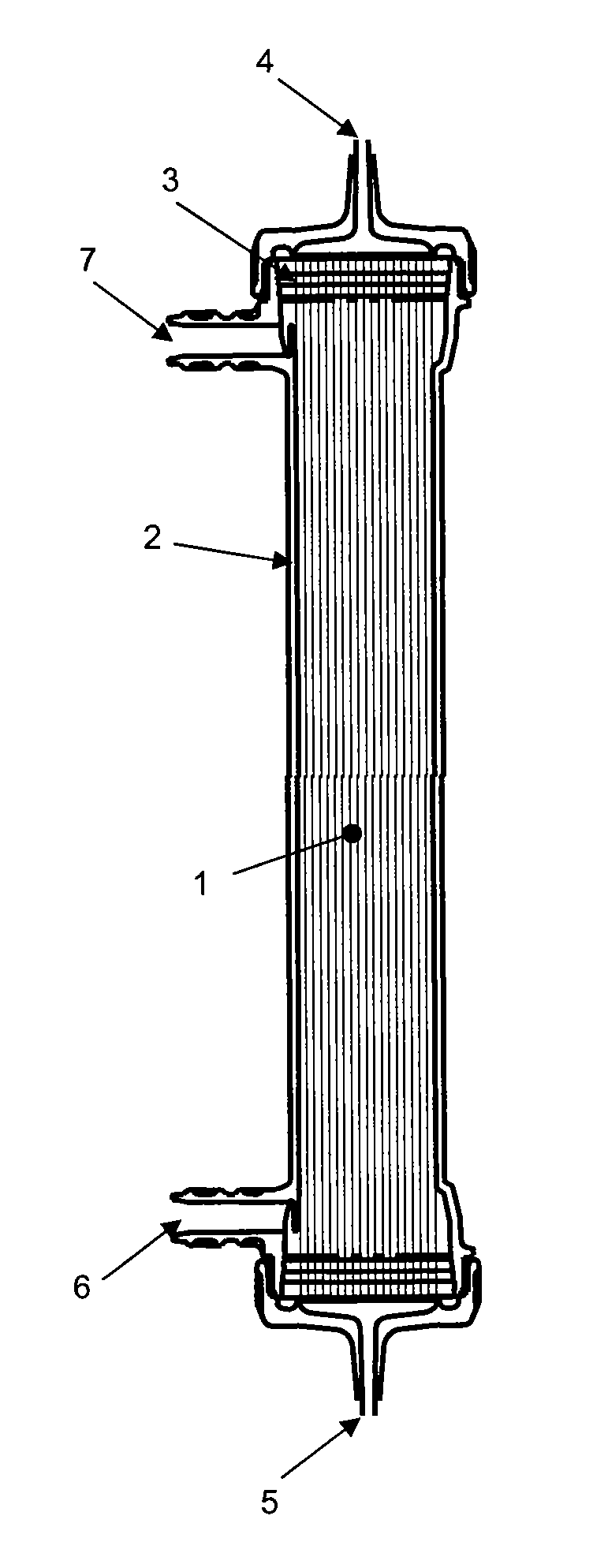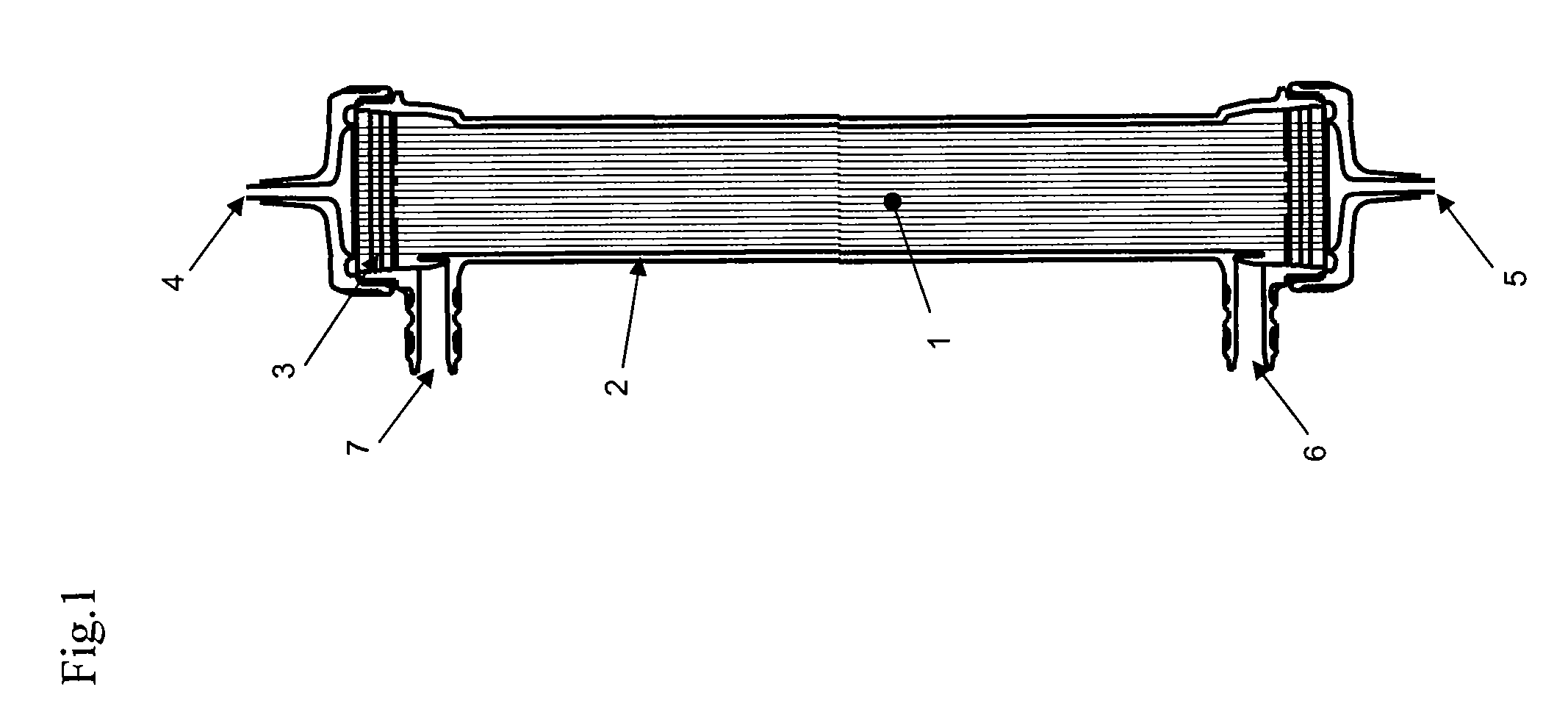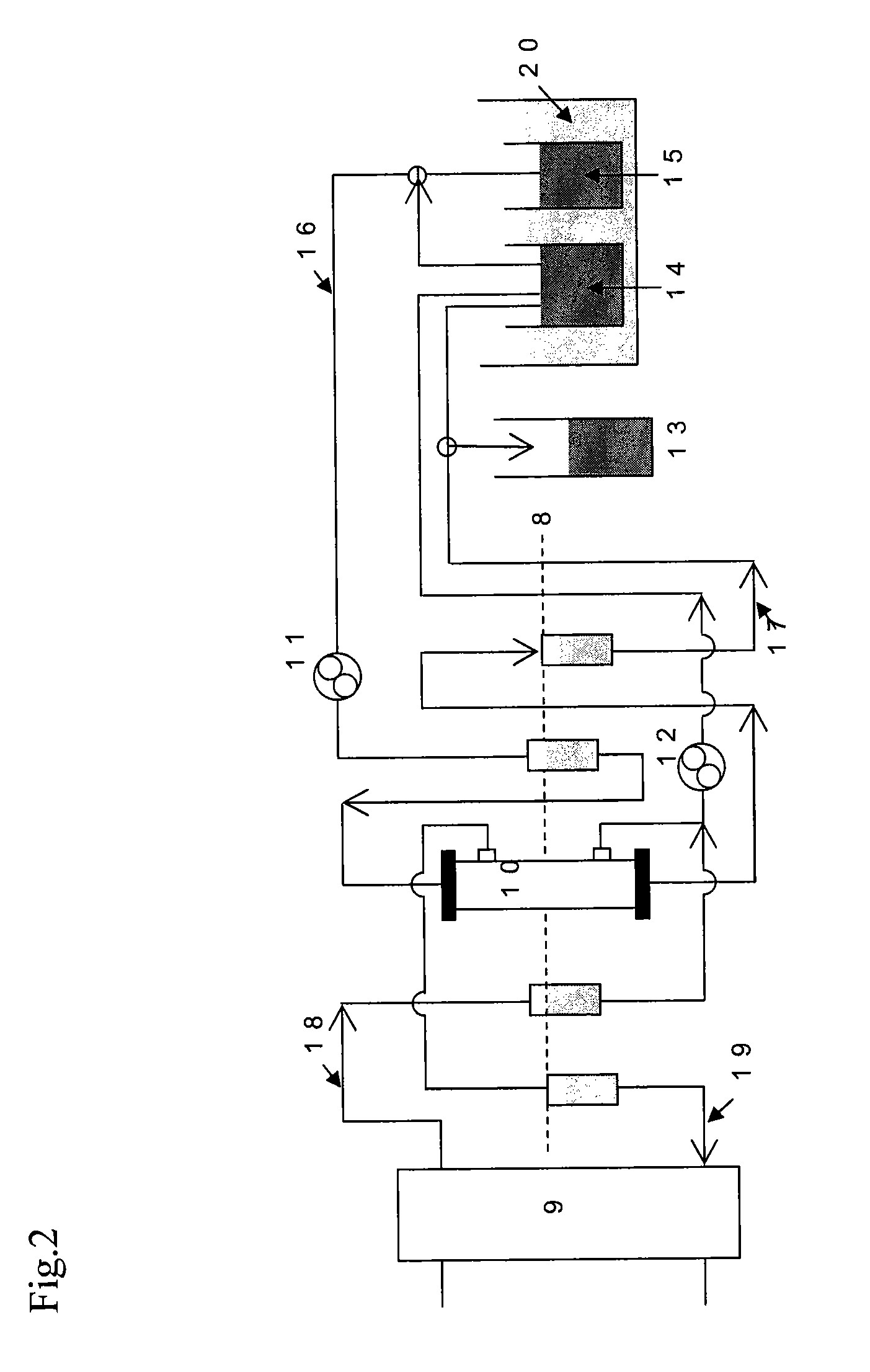Separation membrane, method of producing the same and separation membrane module using the separation membrane
a technology of separation membrane and separation membrane module, which is applied in the direction of osmosis/dialysis, metallic material coating process, water/sewage treatment, etc., can solve the problems of reduced separation membrane performance or biological reaction performance, reduced separation membrane performance, and difficulty in formation of coating layers, so as to improve the effect of inhibiting the deposition of proteins or blood platelets, and reduce the performance of separation membran
- Summary
- Abstract
- Description
- Claims
- Application Information
AI Technical Summary
Benefits of technology
Problems solved by technology
Method used
Image
Examples
example 1
[0155]Five hundred mL of an aqueous solution of 0.1% by weight of a vinylpyrrolidone / vinyl acetate (6 / 4) copolymer (Kollidon VA64 manufactured by BASF) was allowed to pass through the hollow fiber membrane module prepared as described above from the blood side inlet (Bi) to the blood side outlet (Bo). Then, 500 mL of the solution was allowed to pass from the blood side inlet (Bi) to the dialyzate side inlet (Di), so that VA64 was accumulated on the inner surface of the hollow fiber membrane. In this process, the liquid temperature was 30° C., and the flow rate was 500 mL / minute. The VA64 placed in the hollow fiber membrane was further accumulated on the inner surface by pressing the filling liquid from the dialyzate side to the blood side with compressed air at 100 kPa. Thereafter, the filling liquid on the blood side was blown so that the aqueous solution was held only in the hollow fiber membrane. In addition, nitrogen was blown for 1 minute into each of the dialyzate side and the...
example 2
[0156]The same process as in Example 1 was performed, except that an aqueous solution of 0.01% by weight of a vinylpyrrolidone / vinyl acetate (6 / 4) copolymer (Kollidon VA64 manufactured by BASF) was used instead. The measurement of the ester carbon content was performed twice under the same conditions. The results are shown in the table below. A large amount of VA64 was successfully and uniformly localized at the surface of the functional layer, and high resistance to the deposition of platelets and high β2-microglobulin clearance performance were obtained. The β2-microglobulin clearance performance was higher in this example than in Comparative Example 1. This may be because the functional layer surface is covered with VA64 in such a degree that the effect of inhibiting the deposition of proteins and so on is higher than the effect of reducing the pore size, so that the performance is less reduced by clogging of the membrane with proteins. The water content of the insoluble componen...
example 3
[0157]The same process as in Example 1 was performed, except that an aqueous solution of 0.001% by weight of a vinylpyrrolidone / vinyl acetate (6 / 4) copolymer (Kollidon VA64 manufactured by BASF) was used instead. The measurement of the ester carbon content was performed twice under the same conditions. The results are shown in the table below. A large amount of VA64 was successfully localized at the surface of the functional layer, and high resistance to the deposition of platelets and high β2-microglobulin clearance performance were obtained. The resistance to the deposition of platelets was slightly lower in this example than in Example 1 or 2. This may be because the ester group content of the functional layer surface is lower in this example than in Example 1 or 2, so that the ester group distribution is uneven.
PUM
| Property | Measurement | Unit |
|---|---|---|
| angle | aaaaa | aaaaa |
| depth | aaaaa | aaaaa |
| RH | aaaaa | aaaaa |
Abstract
Description
Claims
Application Information
 Login to View More
Login to View More - R&D
- Intellectual Property
- Life Sciences
- Materials
- Tech Scout
- Unparalleled Data Quality
- Higher Quality Content
- 60% Fewer Hallucinations
Browse by: Latest US Patents, China's latest patents, Technical Efficacy Thesaurus, Application Domain, Technology Topic, Popular Technical Reports.
© 2025 PatSnap. All rights reserved.Legal|Privacy policy|Modern Slavery Act Transparency Statement|Sitemap|About US| Contact US: help@patsnap.com



